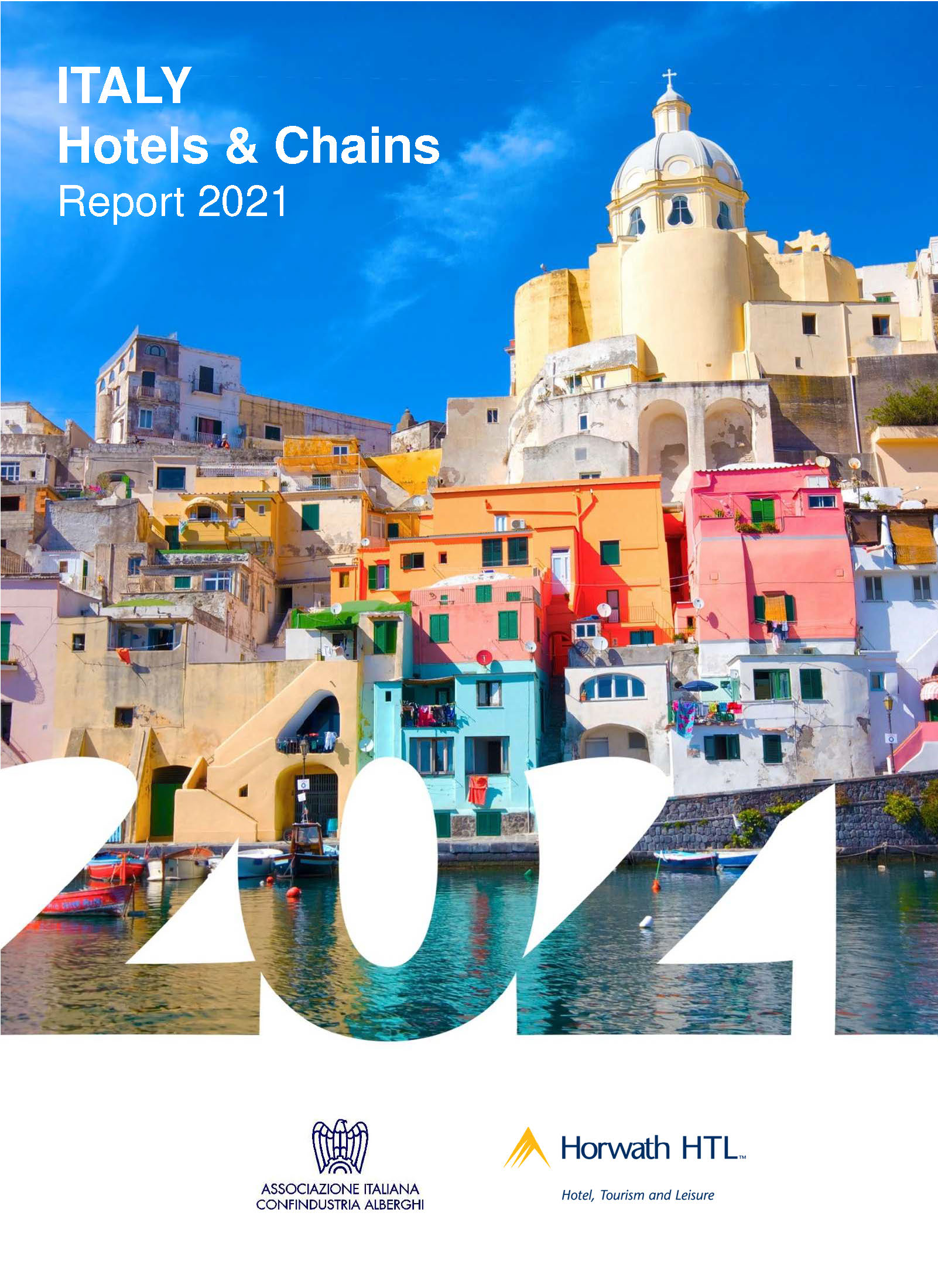
Report
Italy Hotels & Chains Report 2021
Horwath HTL Italy have released the 8th edition of the Italy Hotels & Chains Report 2021, a full year since the beginning of the COVID-19 emergency in Europe. We cannot fail to highlight how much the pandemic has affected the entire world, and is still profoundly affecting the entire Italian tourism sector and the industries connected to it.
Despite showing dramatic and diverse effects on demand, the 2021 edition confirms the on-going strengthening of the Italian Chain hotel supply and stresses the importance to sustain this trend to ensure the country’s competitiveness against the global markets, especially over the strategic upcoming years.
Key Findings
Impact of COVID-19:
- The pandemic severely impacted the Italian hotel industry, with hotel overnights plummeting by 56.9% in 2020 compared to 2019. Major cities like Florence, Rome, and Venice saw even sharper declines, with overnights down by 83.8%, 81.3%, and 74.8%, respectively.
- The overall demand dropped significantly, with a 60% decrease in operating revenues in 2020, and some operators experienced losses exceeding 80%.
Recovery Projections
The report forecasts that the Italian hotel market may not return to 2019 levels until 2023 or 2024. The recovery is expected to be gradual, with domestic tourism playing a critical role in the interim period.
Growth of Branded Hotels
Despite the crisis, chain hotels in Italy recorded a net growth of 55 properties in 2020, bringing the total number of chain hotels to 1,750 with over 185,000 rooms. This represents a penetration rate of 16.9% in terms of rooms, continuing a trend of steady growth over the past decade.
Business Models:
- The two main business models dominating the Italian hotel market are lease agreements (39%) and ownership (37%). Franchising accounts for 19%, while management contracts represent 5%.
- The average size of chain hotels has decreased slightly to 105.8 rooms per property, reflecting the rise in medium-sized, lifestyle-oriented hotels.
Pipeline Developments:
- Between 2021 and 2023, an additional 20,867 rooms are expected to be added to the market, with the majority in the upscale segment (52%) and significant growth in both the economy and luxury segments.
- Rome, Milan, and Venice continue to be the primary focus for new hotel developments, with these cities accounting for a significant share of the upcoming projects.
The Italian hotel market remains resilient despite the challenges posed by the pandemic. The continued growth of branded hotels, coupled with a robust development pipeline, suggests that the sector is on a path to recovery. However, full recovery to pre-pandemic levels is not expected until 2023 or 2024.





